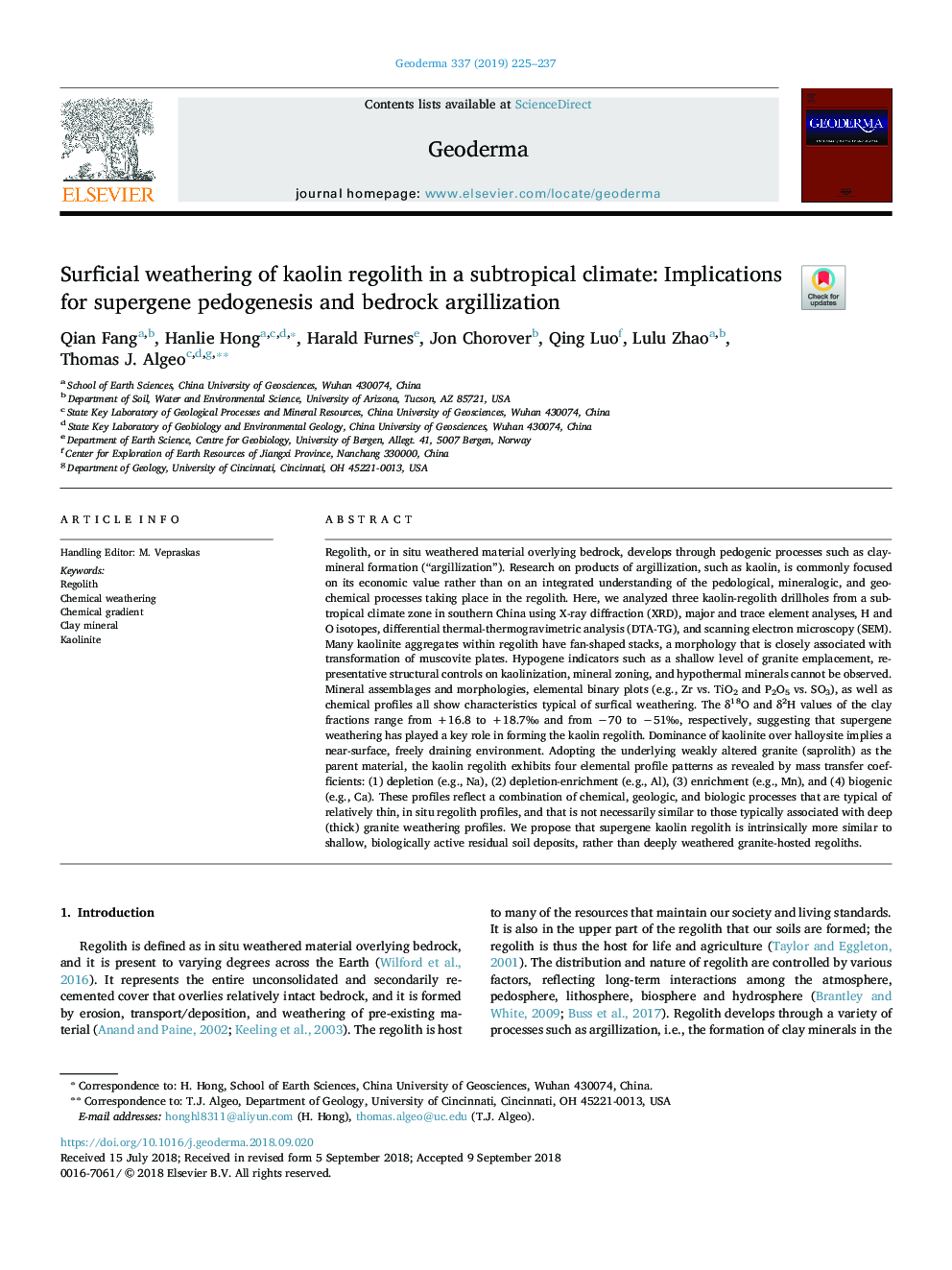| کد مقاله | کد نشریه | سال انتشار | مقاله انگلیسی | نسخه تمام متن |
|---|---|---|---|---|
| 10224005 | 1701069 | 2019 | 13 صفحه PDF | دانلود رایگان |
عنوان انگلیسی مقاله ISI
Surficial weathering of kaolin regolith in a subtropical climate: Implications for supergene pedogenesis and bedrock argillization
دانلود مقاله + سفارش ترجمه
دانلود مقاله ISI انگلیسی
رایگان برای ایرانیان
کلمات کلیدی
موضوعات مرتبط
مهندسی و علوم پایه
علوم زمین و سیارات
فرآیندهای سطح زمین
پیش نمایش صفحه اول مقاله

چکیده انگلیسی
Regolith, or in situ weathered material overlying bedrock, develops through pedogenic processes such as clay-mineral formation (“argillization”). Research on products of argillization, such as kaolin, is commonly focused on its economic value rather than on an integrated understanding of the pedological, mineralogic, and geochemical processes taking place in the regolith. Here, we analyzed three kaolin-regolith drillholes from a subtropical climate zone in southern China using X-ray diffraction (XRD), major and trace element analyses, H and O isotopes, differential thermal-thermogravimetric analysis (DTA-TG), and scanning electron microscopy (SEM). Many kaolinite aggregates within regolith have fan-shaped stacks, a morphology that is closely associated with transformation of muscovite plates. Hypogene indicators such as a shallow level of granite emplacement, representative structural controls on kaolinization, mineral zoning, and hypothermal minerals cannot be observed. Mineral assemblages and morphologies, elemental binary plots (e.g., Zr vs. TiO2 and P2O5 vs. SO3), as well as chemical profiles all show characteristics typical of surfical weathering. The δ18O and δ2H values of the clay fractions range from +16.8 to +18.7â° and from â70 to â51â°, respectively, suggesting that supergene weathering has played a key role in forming the kaolin regolith. Dominance of kaolinite over halloysite implies a near-surface, freely draining environment. Adopting the underlying weakly altered granite (saprolith) as the parent material, the kaolin regolith exhibits four elemental profile patterns as revealed by mass transfer coefficients: (1) depletion (e.g., Na), (2) depletion-enrichment (e.g., Al), (3) enrichment (e.g., Mn), and (4) biogenic (e.g., Ca). These profiles reflect a combination of chemical, geologic, and biologic processes that are typical of relatively thin, in situ regolith profiles, and that is not necessarily similar to those typically associated with deep (thick) granite weathering profiles. We propose that supergene kaolin regolith is intrinsically more similar to shallow, biologically active residual soil deposits, rather than deeply weathered granite-hosted regoliths.
ناشر
Database: Elsevier - ScienceDirect (ساینس دایرکت)
Journal: Geoderma - Volume 337, 1 March 2019, Pages 225-237
Journal: Geoderma - Volume 337, 1 March 2019, Pages 225-237
نویسندگان
Qian Fang, Hanlie Hong, Harald Furnes, Jon Chorover, Qing Luo, Lulu Zhao, Thomas J. Algeo,